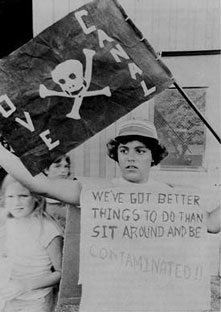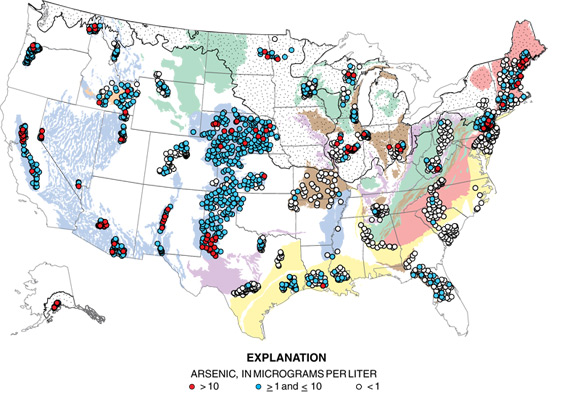Case Studies in Groundwater Pollution
What would you do if you found out your school was sitting on top of a toxic waste dump? What would you do if you found out that the water you drink contains arsenic? Read through the following case studies to learn how some people dealt with groundwater pollution.
Case Study: Love Canal, New York
 In the 1970s, an entire community near Niagara Falls found out that their homes and schools were built over an abandoned waste dump. It was leaking poisonous chemicals into the groundwater beneath it. The chemicals were left over as byproducts of a dry cleaning industry that had once operated there. The leaking waste lead to increased sickness, birth defects, miscarriages, and perhaps even cancer. The residents had to be evacuated from their homes. The event became known as the Love Canal disaster, named after the neighborhood in which it happened. It was one of the worst environmental disasters in our nation’s history.
In the 1970s, an entire community near Niagara Falls found out that their homes and schools were built over an abandoned waste dump. It was leaking poisonous chemicals into the groundwater beneath it. The chemicals were left over as byproducts of a dry cleaning industry that had once operated there. The leaking waste lead to increased sickness, birth defects, miscarriages, and perhaps even cancer. The residents had to be evacuated from their homes. The event became known as the Love Canal disaster, named after the neighborhood in which it happened. It was one of the worst environmental disasters in our nation’s history.
Love Canal Questions
Case Study: The Ganges Plain

Another devastating story comes from the Ganges Plain area of northern India and Bangladesh. This area has severe groundwater contamination by naturally occurring arsenic. Arsenic is a carcinogen linked to several types of cancer. Many people in the area have died from drinking the arsenic-contaminated groundwater that was pumped up from wells. As organic matter in the aquifer sediment decays, it generates oxygen-free (anaerobic) conditions. Removing oxygen from the aquifer encourages the dissolution of minerals that contain arsenic. Once arsenic is dissolved, it becomes a very serious threat. Recent deeper wells in the Ganges Plain create even more access to high levels of arsenic.
This problem also occurs in other parts of the world, including the U.S. The U.S. Environmental Protection Agency estimates that as many as 7% of U.S. wells may contain unsafe levels of arsenic. Small, under-the-sink filter systems are available for removing arsenic from well water that people drink.